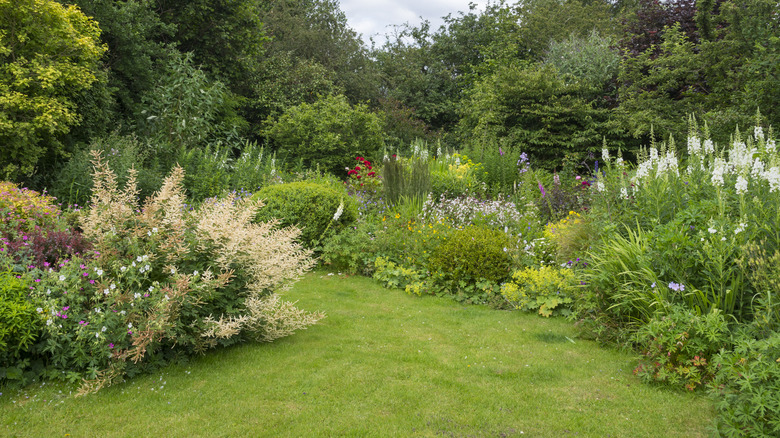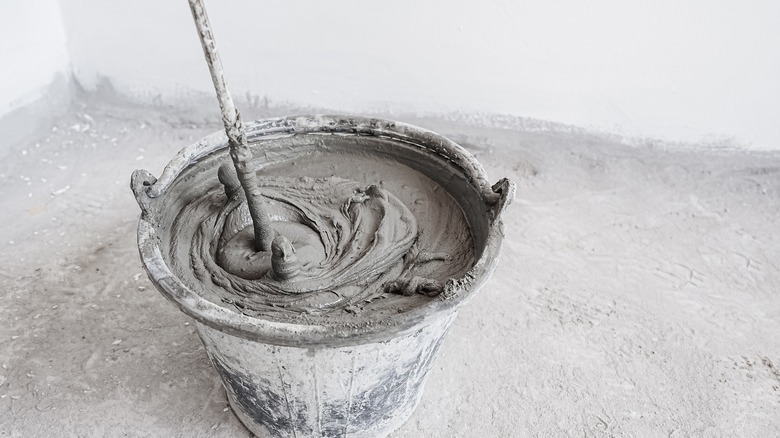DIY Leaf Stepping Stones To Make Your Yard Feel Like A Fairy Garden
Distinctive garden elements can often be expensive and hard to find, particularly if you are looking beyond traditional rectangular and circular paving stones for something with a little bit more beauty and uniqueness. Internet DIYers, however, have been showing off easy and cheap projects to create DIY paver stones perfect for your garden footpath. These stones can be created from any large and thickly veined leaf and some simple Quikrete. Shaped like leaves and other botanical elements, these stones are perfect for granting whimsy and beauty with a budget-friendly price tag that allows you to make as many as you need. Use them alone or with other elements to create a DIY garden path.
Quikrete — easy to use and fast-setting concrete — is readily available in large bags from home and hardware retailers for well under $10 and simply requires water to mix. You can get four to five pavers from a single 50-pound bag of the substance. Great leaves for pressing include larger plants with more pronounced vein systems that will really show up in the relief. Many DIYers love rhubarb leaves for this project, though other great options include rubber trees, pumpkin plants, monstera cuttings, and hostas.
Making leaf paver stones
Lay your large leaf on a flat surface like a piece of cardboard, plastic, or plywood with the veiny side up. Mix your Quikrete as per the instructions in a bucket, making sure to wear gloves and a mask since the chemical compound can be harsh and result in chemical burns that could leave you in pain. Use a spatula to place liberal globs of Quikrete over the surface of the leaf, pressing slightly to really get the substance flush against the veins and surface of the leaves.
Quikrete can take an initial 24 hours to dry, but can still be fragile and brittle until it has cured for several days. Flip your pavers over on the second day and remove as much of the plant matter as possible, being careful not to pull too vigorously or apply stress to the concrete just yet. As the substance hardens over the next several days, you will be more easily able to remove the remaining plants before installing the pieces in your garden.
Other ideas for botanical pavers
There are a number of great variations for this project that use fast-setting concrete and plant clippings to make distinctive garden pavers. If you do not want the organic shape of the leaves themselves, you can also create square or round pavers that use the same principle. Just create a mold using cut up tube, wood, or other materials and lay the plant matter on the bottom. Put the Quikrete into the mold and then flip it over after it's cured to remove the plant matter. This allows you to have uniformly shaped pieces with various botanical designs. You can also use the bottom of a bucket to get a thick circular shape.
If you want to add a little color to your paver stones, Quikrete sells various shades of liquid cement colorings that can be added to the initial mix of concrete. You can also add elements like colored sand or glitter over the leaves that will be adhered to and embedded in the top surface of the Quikrete.

